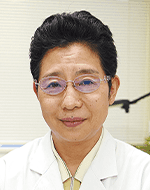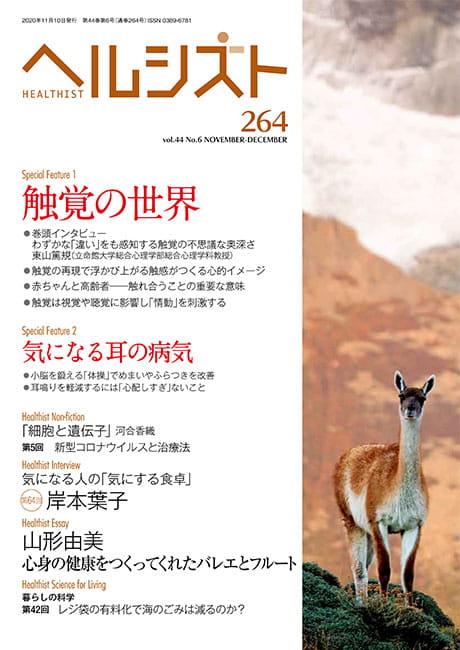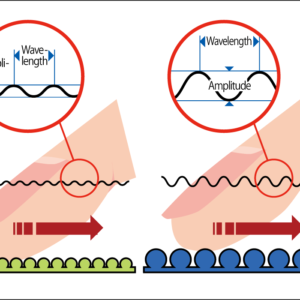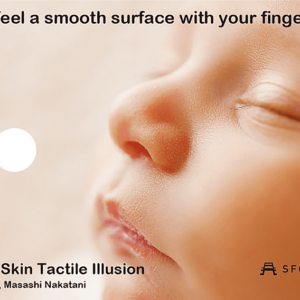A crying baby will eventually stop wailing when its mother picks it up and cuddles it. This is because the physical contact activates the parasympathetic nervous system and makes the child relax. It is said that there is a possibility that hugs and similar forms of contact are starting to function as a communication tool. Stimulating the sense of touch through skin-to-skin contact and the like is important at any age. For seniors in particular, touch has a health preservation effect, not only due to the movement of the body, but also by stimulating the skin.
Special Feature 1 – The World of Touch Babies and seniors: the importance of physical contact
text by Takakazu Kawasaki
Human life is a continuous process of skin-to-skin contact, from the time our mothers hold us immediately after we are born right through to the nursing care we receive in old age. Why do we engage in physical contact with each other? What is the significance of physical contact between one person and another?
Dr. Sachine Yoshida, a lecturer at Toho University’s Faculty of Medicine, studies parent-child relationships from the perspective of physical contact.
“The relationship between parent and child is one of the most fundamental human relationships. But how are the ties between parents and children formed? Perhaps we can gain insights by closely observing babies when they’re with their parents.
We know from experience that picking up a crying baby and carrying it will stop the baby crying. However, there had been no scientific examination of what actually occurs within the baby when that happens.” says Dr. Yoshida.
An important response for avoiding danger
When she was at RIKEN Brain Science Institute, Yoshida and colleagues in a research team led by Dr. Kumi Kuroda undertook a study with the cooperation of mothers and infants under six months of age. The mothers repeatedly spent about 30 seconds with their baby in their arms, either holding it while sitting down or carrying it while walking around. The infants’ physiological responses were recorded using an electrocardiogram, while their behavioral responses were recorded on video.
“As a result of the investigation, we found that when infants were carried by their mother, their vocalization fell to about 1/10 and voluntary movement to about 1/5 of the levels compared to when they were just held (Figure 1). Their heart rate dropped substantially as soon as their mother began to walk around. This was the first experiment to demonstrate that infants relax when carried. Although this experiment was carried out only with mothers, we know from our preliminary experiments that the same kind of reaction occurs with fathers and others with childcare experience,” says Dr. Yoshida.

Figure 1. Changes in an infant when its mother carries itWhen the mother switched from “sitting and holding (blue)” to “walking and carrying (red),” the infant’s voluntary movement and vocalization immediately decreased and its interbeat interval increased (heart rate fell).
(Modified from Esposito, Yoshida, Kuroda, et al. Current Biology, 2013)
Humans are not the only species in which parents carry offspring that cannot walk well yet. Cats, lions, squirrels, and a variety of other mammals carry their younglings in their mouths to a nest or other safe place. When this occurs, the offspring goes quiet and curls up into a more compact shape to make it easier for the parent to carry them. In the field of animal behavioral research, the response causing young animals to go quiet in this way is called the “transport response.”
Yoshida and her colleagues conducted the same experiment with mice as they did with human mothers and infants. Imitating the actions of a mother mouse picking up its pup, the researchers gently grasped preweaning mouse pups by the skin at the back of the neck (Figure 2). The results showed that their voluntary movement and heart rate fell, just as seen in human babies. Mouse pups use ultrasound to call their mothers and the study also found that their ultrasonic vocalizations fell to about 1/10 of the level observed when they were not lifted in this way. In addition, when the researchers carried out an experiment in which they had mothers carry mouse pups that did not exhibit the transport response that made them calm, they found that it took the mothers longer to carry the pups, because the young mice would not keep still.
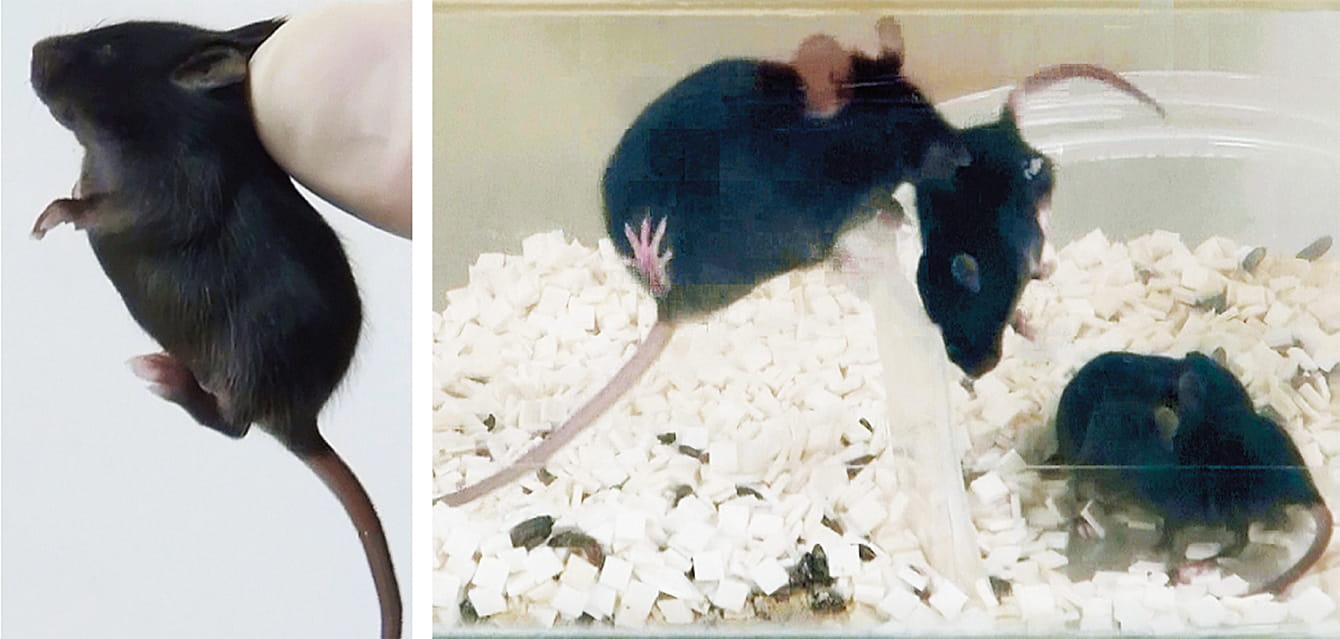
Figure 2. The transport response in mouse pupsWhen the researchers grasp the mouse pups with their fingers and pick them up and when the mothers pick them up in their mouths, the mouse pups curl up and become calm.
(Modified from Esposito, Yoshida, Kuroda, et al. Current Biology, 2013)
“From this series of experiments, we learned that, when carried by their mothers, infants —— whether humans or mice —— immediately stop crying and become calm. The transport response, which was known to occur in the young of mammalian animals, is therefore thought to occur in human infants as well. If infants are restless or cry out loudly while being carried, it ultimately hinders the parent’s child-carrying behavior. In the case of wild animals living in harsh natural environments, this could immediately endanger the child’s very existence. One could say that, by becoming calm and adopting a posture that allows them to be easily carried, the child is cooperating with the parent carrying it. From such experiments, we can see that, even at an early stage after birth, the parent-child relationship is not unilateral, but is rather based on a bilateral approach and response.”
Children relax when hugged by their parents
Dr. Yoshida continued her research into physical contact after moving to Toho University’s Faculty of Medicine.
“Broadly speaking, physical contact between parents and children can be divided into two types, according to its purpose. The first is physical contact directly related to the child’s survival, namely breastfeeding, keeping it warm, and transporting it. The transport response I just discussed, in which infants become calm during parent-child movement, is included in this type of contact. The other is physical contact for the purpose of expressing emotion, like hugging and patting. Parents hug their babies to express joy and affection. This behavior is seen among parents and children in a variety of countries. Hugging is recommended when raising children, but we did not previously know what changes occur in a baby when it is actually hugged.”
Accordingly, a research team including Yoshida and Professor Hiromasa Funato conducted a study in which mothers of infants aged less than a year old had a pressure sensor attached to the palm of their hand and then held their infants using three different levels of contact pressure in response to the following three instructions: “hold the infant as usual,” “hug the infant while thinking that it is adorable,” and “hold the infant tight enough to be able to run fast while holding it” (Figure 3). The contact pressure used for each type of hold varied considerably between one mother and another, but increased in pressure in the order “hold,” “hug,” and “tight hug.” The researchers then fitted the mothers and children with an electrocardiograph and recorded the changes in the interbeat interval of their heartbeats. When the interbeat interval becomes longer, heart rate falls, while a shorter interbeat interval means an increased heart rate. An increase in the interbeat interval of heartbeats signifies relaxation.
As a result of the experiment, the team found that in infants aged four months and older, the interbeat interval increase ratio is higher when the infant is hugged by its mother than when it is held using the other two methods, indicating that it is in a relaxed state. The same change occurred when the infant was hugged by its father, but not when it was hugged by a female stranger (Figure 3).
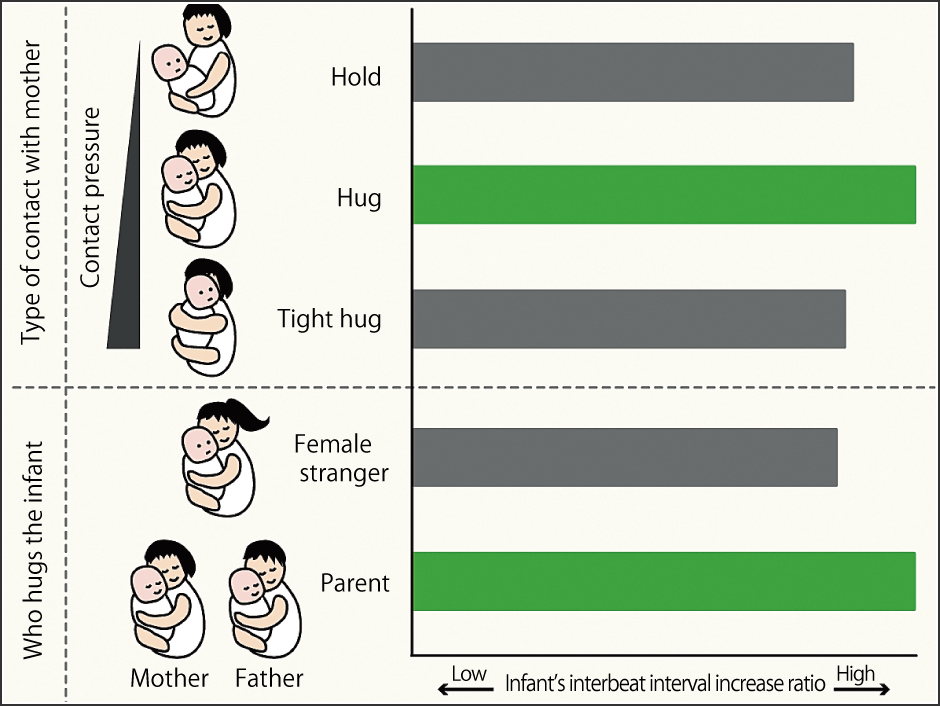
Figure 3. Infants relax when hugged by their parentsThe interbeat interval in infants aged four months and older varies according to contact pressure and who is hugging the infant. The green bars indicate the times when the infant is most relaxed.
(Modified from Yoshida, Funato, et al. iScience, 2020)
This analysis does not include crying babies. In other words, this suggests that even when a baby appears at first glance to be calm when hugged, its physiological response actually differs considerably according to who is hugging it. At the same time, the researchers discovered that both mothers and fathers relax when hugging their own child.
“Until now, there’s been hardly any research directly quantifying the effect of physical contact between parents and infants. This was the first time it had been proven that infants relax as a result of hugs of the usual strength given by parents to their children. As this change wasn’t observed when infants were hugged by women they had met for the first time, nor among infants aged under four months, it is thought to be indicative of the infant’s development and the deepening of its relationship to its parents.
Infants might perhaps learn what the typical hugs from their mothers and fathers feel like through physical contact during the first three months after birth. As feedback from infants is unclear, because they can’t speak yet, caring for them can feel one-sided, but from this experiment, we can see that infants do actually respond in their own way to day-to-day physical contact. It seems likely that such parent-infant interaction eventually forms bonds between them,” says Dr. Yoshida.
Physical stimuli with a positive effect on health
Infants eventually grow into adults and have families of their own. It has been discovered that in old age, when people require nursing care, physical contact with others and providing stimulation to one’s own body have a positive effect on health.
Dr. Harumi Hotta, leader of the Department of Autonomic Neuroscience at Tokyo Metropolitan Institute of Gerontology, studies the relationship between physical stimuli and dementia in seniors.
“The issue of dementia is very important in nursing care and we’re studying the various effects of skin stimulation,” says Dr. Hotta.
Cholinergic nerves are at the core of her research. These nerves originate from deep within the cerebrum (basal forebrain) and project into areas such as the cerebral cortex (the part of the cerebrum involved in high-level functions) and hippocampus (the brain structure involved in memory and spatial learning ability), where they release a neurotransmitter called acetylcholine. It has been discovered that, when acetylcholine is secreted, blood vessels dilate and blood flow increases. At the same time, neurons that produce nerve growth factor (NGF) are stimulated, and the secreted NGF has been found to protect neurons in the cerebral cortex and hippocampus (Figure 4).

Figure 4. Walking is effective in activating cholinergic nervesThe acetylcholine released by cholinergic nerves activates cerebrovascular blood flow and protects neurons. Walking and stimulation of the skin activate cholinergic nerves.(modified from https://www.tmghig.jp/research/cms_upload/20170320.pdf)
Acetylcholine is important because a lack of blood flow to the cerebral cortex and hippocampus occurs in seniors and patients with Alzheimer-type dementia. The neurons of the brain are highly vulnerable to an inadequate blood supply and cannot regenerate once they have died. Drugs that increase acetylcholine are used as anti-dementia drugs.
So how can the cholinergic nerves be stimulated?
“One method is walking,” says Dr. Hotta.
“Walking boosts acetylcholine and increases blood flow. The responses of cholinergic nerves activated by electrical and chemical stimulation in animal research are very similar to those seen when they are activated by walking. The blood flow response is also similar and acetylcholine is released, too. (Figure 5)”

Figure 5. The basal forebrain cholinergic system increases blood flow and NGF to protect the brainWhen the acetylcholine released by cholinergic nerves activates cerebral blood flow, it simultaneously causes the secretion of nerve growth factor (NGF) by stimulating NGF-producing neurons, thereby protecting neurons.(modified from Hotta et al. Neurosci Res, 2009)
In that case, would more vigorous exercise such as fast walking or jogging not result in even greater secretion of acetylcholine?
“In experiments on rats, we looked at walking at a normal pace, walking slowly at about half that pace, and walking quickly at double the normal pace. In these experiments, fast walking results in greater blood flow, but blood pressure also increases, which makes the risk higher for elderly people. Even walking at a comfortable pace has an effect, so it is a good idea for people to get into the habit of walking.
Doctors whose research focuses on seniors often say that it’s good to swing your arms when you walk. They also recommend Nordic walking, where you have a walking pole in each hand.”
Stimulating skin and muscle is important
Walking is an activity in a conscious state, but Dr.Hotta and her team used anesthetized rats for their research.
“Anesthesia eliminates the effects of consciousness and also eliminates sensation. However, the body’s reflexes still remain. Accordingly, we stimulated the skin, face, paws, back, legs, and various other parts of the body by brushing. We found that no matter which part is stimulated, activity such as cerebral blood flow, acetylcholine secretion, and neural activity in the basal forebrain increases. We discovered that brushing the skin also boosts NGF secretion.
Among humans, too, it has long been said that rubbing the body with a dry towel is good for the health. I believe that brushing the skin with a dry towel is also related to brain health. Continuing to rub for at least five minutes has a powerful effect. If possible, it’s best to do it continuously for at least 15 minutes.”
We have seen that hugging an infant has an important meaning and Dr. Hotta emphasizes that “stimulating the skin, muscles, and joints is important and meaningful in elderly people, too.”
As people age, they move less and eat less. However, in parts of Japan that are renowned for their residents’ longevity, seniors reportedly walk up and down mountain trails and hilly roads, and have appetites as strong as young people. These elderly people eat well, with diets including meat and fish.
“One of the most important things in nursing care is eating. Chewing boosts cerebral blood flow. Based on experiments involving stimulation of the masticatory area in rats, it is surmised that even if the body does not move, the desire to eat or simply just imagining eating might activate the cholinergic nerves.”
In addition, the act of swallowing when eating stimulates the thyroid gland and increases hormone secretion. Dr. Hotta has recently published a study showing that repetition of this reflex reduced bone loss in postmenopausal osteoporosis model rats (Figure 6).
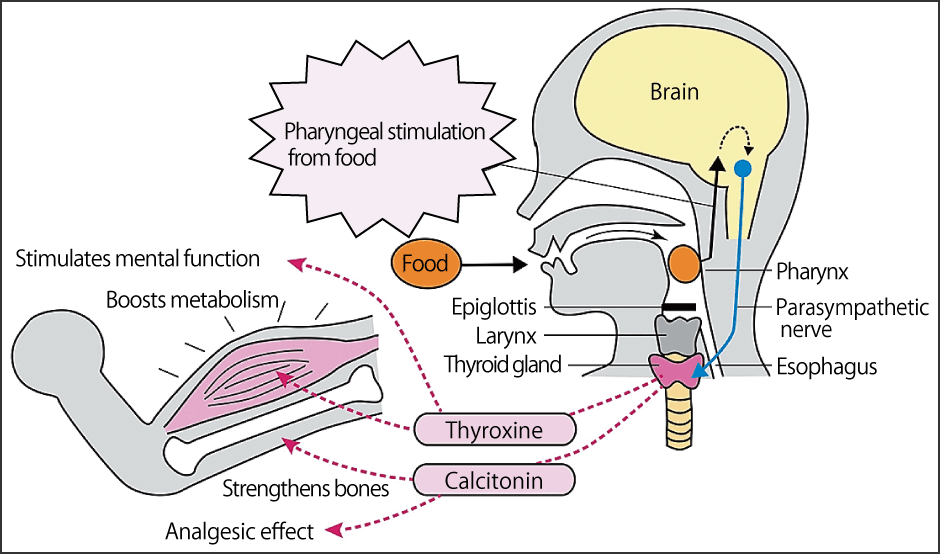
Figure 6. Promotion of thyroid hormone and calcitonin secretion through mechanical stimulation of the pharynxStimulation of the pharynx when swallowing food increases the hormones secreted by the thyroid gland, boosting metabolism and strengthening bones.(modified from https://www.tmghig.jp/research/publication/news/pdf/297.pdf#page=1)
“We are gradually starting to understand how important the mechanisms of actions of daily living such as walking, stimulating the skin, eating, chewing, and swallowing are to brain health.”



